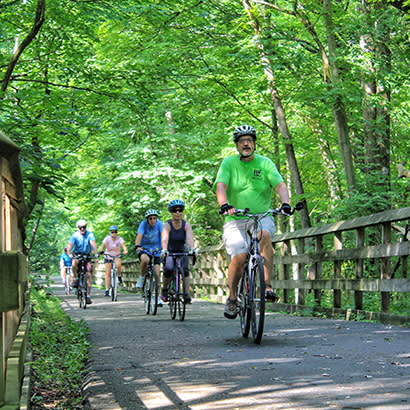Parks provide significant benefits to both the health and well-being of people who use these spaces and the economy.
Data establishes the ways the parks promote greater well-being across four domains of health: physical, mental, social and environmental. Greater physical activity, access to green spaces, and services and programming that promote better health outcomes lead to less reliance on medication, fewer trips to the hospital, and lower healthcare costs.
Data also shows the vast range of economic benefits that parks provide. Local park and recreation agency operating and capital expenditures across the United States generated $218 billion in economic activity and supported nearly 1.3 million jobs in 2019. This is only one facet of parks and recreation’s economic impact, which also includes environmental benefits, business development, tourism and higher property values (and a larger tax base).
With this in mind, NRPA partnered with the Urban Institute to develop resources that help park and recreation professionals and advocates make a health-based case for parks, including measures of the economic value to those health benefits. So far, this partnership has released two resources, a literature review and a framework that demonstrates how public data establishes the ways parks promote greater well-being.
Parks and public open space promote physical activity, improve mental well-being and foster social connections in communities across the nation. Parks provide the public with low-cost or no-cost physical activities, like walking, hiking and biking. These activities help prevent increasingly common health conditions, such as obesity, anxiety, cardiovascular disease and diabetes. Unfortunately, not every person lives within walkable distance of a park. The access gap not only prevents community members for enjoying all that parks have to offer, it also may lead to health disparities.
Read the report
The comprehensive framework demonstrates the ways parks promote greater well-being and provides guidance on how to communicate the economic value resulting from these benefits. It provides five steps for assessing these benefits: 1) Identify park characteristic, 2) Examine who has access, 3) Select and measure health outcomes, 4) Estimate economic benefits, and 5) Drive equity through action steps. Use the framework to demonstrate the health contributions of park systems quantitively and qualitatively.
Read the report
Read More
- “A Framework for Assessing Equitable Health Outcomes of Parks,” Parks & Recreation magazine, January 2023
- “4 Dimensions of Health in Parks and Recreation,” NRPA blog, December 27, 2022
- “5 Steps to Assessing Equitable Health Outcomes of Parks,” NRPA blog, December 15, 2022
- “A Framework for Assessing Equitable Health Outcomes of Parks,” NRPA blog, December 5, 2022
- “Studying the Health Benefits and Economic Impacts of Parks,” Parks & Recreation magazine, April 2022
Additional NRPA Resources


